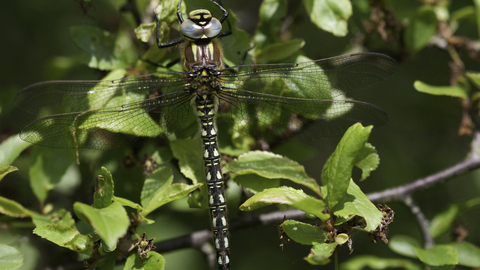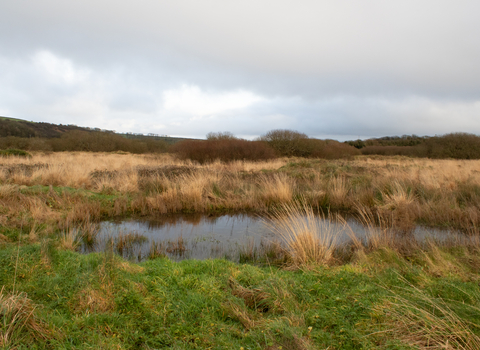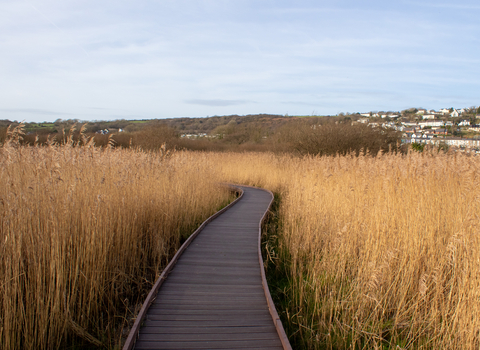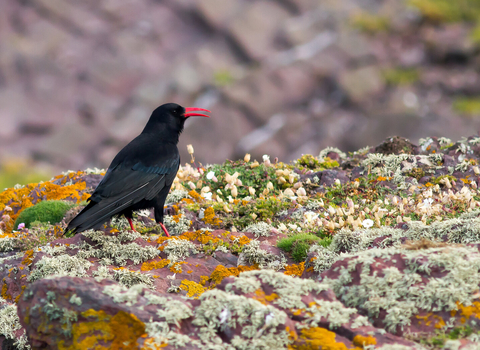
Vicky Nall
Dowrog Common
Location
Know before you go
Dogs
Please keep dogs on a lead and clean up your dog litter.
When to visit
Amseroedd agor
Open access reserve.Amser gorau i ymweld
May-Aug, Jun-Aug, Oct-FebAm dan y warchodfa
The wet heath supports Western Gorse, Heather, Cross-leaved Heath and Bell Heather, with Purple Moor Grass, Common Fleabane and Hemp-agrimony on the riverside marsh and fen, along with Grey Willow.
Many rare oceanic heath and marsh plants occur on the reserve, including Yellow Centaury, Pale Dog-violet, Wavy St. John’s Wort, Three-lobed Crowfoot and Pilwort. There are several small pools colonised by Bog Pondweed and Marsh St. John’s Wort.
To the western end of the reserve lies Dowrog Pool, a seasonal pond which reduces to 6 ha of open water during dry periods. The pool is surrounded by a swamp of Reedmace, Water Horsetail, Marsh Cinquefoil and Bogbean. Further pools have been excavated on the reserve to enhance this important habitat for Odonata and to encourage the spread of the rare Pilwort.
The site supports a diverse and interesting range of invertebrates including the Marsh Fritillary butterfly, Scarlet Tiger moth, Small Red Damselfly, Hairy Dragonfly and Scarce Blue-tailed Damselfly. Rare flies include Colobaea bifasciella and C. distincta and notable beetles include Bradycellus collaris and Galerucella calmarfensis.
Wintering wildfowl and birds of prey proliferate on the Common. Hen Harrier roost on site, and Short-eared Owl and Merlin are regular winter visitors. Bewick’s and Whooper Swans, Teal, Wigeon, Shoveler and Mallard can be seen in winter along with Snipe, Water Rail, Coot and Moorhen, particulary around Dowrog Pool. The wetland areas also support breeding Grasshopper Warbler, Reed Bunting and Sedge Warbler. Otters regularly visit the site and Water Shrews have also been recorded.



